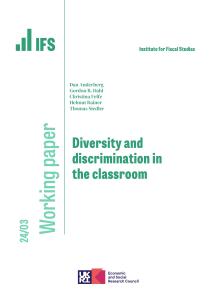- The Social Mobility Foundation (SMF) is a charity that aims to make a practical improvement to social mobility in the UK by encouraging and supporting access to ‘high-status’ universities and professional occupations for high attaining pupils from disadvantaged backgrounds.
- The SMF’s programmes are targeted to those who are eligible for free school meals (or, in earlier cohorts, the educational maintenance allowance) or, amongst the latest cohorts, to those who are in the first generation of their family to attend higher education and who attend a relatively disadvantaged school.
- The SMF’s current programmes feature four key elements of mentoring, internships, university application support (including trips to universities and assistance with writing their personal statement, tests and interviews) and skills development workshops. Their main programme is known as the Aspiring Professionals Programme (APP). In recent years, they have also added more specialist programmes run in partnership with other organisations. For example, they run the J.P. Morgan Residential Programme targeted to those living outside London who are interested in a career in banking and finance.
- University participation, and especially participation at a high-status institution in a relevant subject, is a potentially important intermediate step towards accessing the type of professional occupations the SMF targets. This report therefore evaluates the impact of the SMF’s programmes on university participation overall and at high-status institutions. It also assesses its effect on subject choice (although this is not explicitly targeted by the SMF’s programmes). The impact of the SMF’s work on post-graduation education and employment choices, and in particular occupation outcomes, will be evaluated in future by the Institute for Fiscal Studies (IFS) as the required data become available.
- This evaluation compares the education outcomes of SMF participants (collected by SMF via participant questionnaires) with outcomes for a group of pupils with similar observable characteristics (such as performance at secondary school and neighbourhood context), observed in administrative data. This report focuses on the education outcomes for four cohorts of participants with the SMF: the first cohort we look at entered the programme in 2009 (referred to as the 2009 cohort), the second in 2010, the third in 2011 and the fourth in 2012.
- We can interpret the difference in university participation and subject choice between SMF participants and our suitably chosen ‘comparison’ group of young people as the causal impact of the SMF programmes, under some assumptions, as follows.
-Participants do not choose to be part of the SMF programme on the basis of characteristics that are not observable to the researcher, and that also influence education outcomes. Examples of such factors could be pupils’ motivation and professional aspirations, conditional on performance at secondary school.
-The sample of participants for which we observe education outcomes are a representative sample of SMF participants.
- We find little evidence to suggest that SMF participants are more likely to go to university at age 18 than a group of pupils with similar prior attainment, subject choice and neighbourhood context. However, amongst those who do go to university, there is strong evidence that SMF participants are more likely to attend a high-status institution.
- Conditional on going to university, the estimated impact on the probability of attending a Russell Group institution is large, equivalent to an increase across SMF cohorts of between 17% and 27%, compared to the level of participation that would otherwise be expected in the absence of the SMF’s APP.
- The estimated impact on the probability of attending an institution most likely to be visited by ‘top employers’ is also large, equivalent to an increase across SMF cohorts of between 13% and 43%, compared to the level of participation that would otherwise be expected.
- The range of estimates for the increase in participation at a high-status institution is roughly equivalent to the difference between achieving three A grades at A-level and three A* grades at A-level, on average, conditional on participation. This gives some sense of the scale of the estimated impact. As an additional comparison, around 65% of pupils who attend independent schools for A-levels and who achieve a high level of attainment (at least three C grades) attend a Russell Group institution, conditional on university participation, compared to over 70% of SMF programme participants.
- The J.P. Morgan Residential Programme was available to a small number of participants in the 2012 cohort. Due to a lack of data availability, the estimates for the 2011 and 2012 cohorts (those participating both in the APP and in the J.P. Morgan Residential Programme) are less reliable and should be interpreted with greater caution. Nonetheless, participants on the J.P. Morgan Residential Programme are substantially more likely to attend a high-status institution than otherwise similar pupils. For example, conditional on going to university, they are around 72% more likely to attend a Russell Group institution and 130% more likely to attend an institution that is amongst the most visited by top employers.
- These results suggest that the SMF programmes are more likely to influence individuals’ decisions regarding university choice, or the probability of a successful application to a high-status institution, than to affect the likelihood of going to university at all. There is also little evidence to suggest that the subject choices of SMF participants are affected by the SMF programmes.
- These results suggest that participation at high-status higher education institutions for high-attaining disadvantaged young people can be significantly affected by involvement with programmes such as the APP run by SMF. However, these estimates can only be regarded as the causal effect of the programme on the outcomes of interest under the assumptions outlined above. In particular, participation in the SMF’s programmes must be effectively random conditional on the (rich set of) characteristics we observe.
- While it is impossible to fully judge whether these conditions hold, it is most likely that the estimates are biased upwards (i.e. that the true impact of the SMF programmes is somewhat lower than the estimates we present). This could arise if, for example, SMF participants are, on average, more motivated than our control group (which is plausible because participation in the programme was voluntary rather than mandatory). Notwithstanding these concerns, given the magnitude of the estimated effects, it is likely that the programme has a sizeable positive effect on the likelihood of attending a high-status institution.











